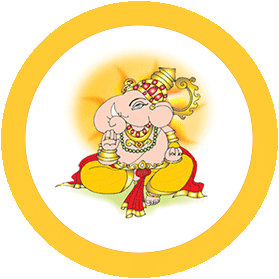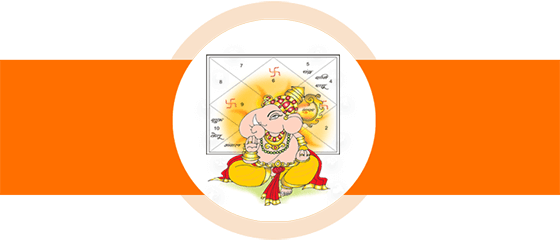Learn Astrology: Introduction
This is first part of a weekly series on learning Indian astrology by famous astrologer Punit Pandey. Keep visiting https://www.AstroCAMP.com for regular learning. If you want to read this article in Hindi, please click here.
Generally most of the people are interested in astrology and want to learn this ancient science. But the biggest roadblock and most difficult question they face is – where to start learning from?
Quite a few succeed in finding a guru with their persistent endeavor, but these gurus teach astrology in such a complicated way that scares off even the earnest aspirants. Most of the astrologers begin teaching with birth-chart making; and its complicated mathematical calculations diminish learners' enthusiasm and frighten them away. And rest of the pupils run off after hearing complex and high-sounding terminology of astrology.
If certain basic principles are followed sincerely, it can make astrology learning a pleasant and fulfilling experience. Those who want to master science of astrology must always bear these points in their minds:
-
Begin studying astrology in step by step fashion.
-
Until a principle is understood completely, do not move to the next one or the other book.
-
Do not just read, but assimilate whatever is read.
-
Do not read astrology books without guidance of an experienced guru. Reading more books can confuse you, as there are many junk astrology books in the market.
-
In the beginnings, pay your attention toward analyzing birth-charts rather than making them.
-
Initially start analyzing the birth-charts of your friends and relatives who you know well.
-
As far as possible, learn Sanskrit synonyms of English words used in astrological terminology.
One can advance rapidly in his endeavor to learn astrology, if one keeps above points in mind and stick to them.
Astrology can be divided in two sections: mathematical astrology and predictive astrology. Mathematical part of astrology mainly contains creation of birth chart. In this part of astrology, different positions of the planets are calculated on the basis of time and place etc. On the other hand, predictive astrology is used for foretelling events of future. In this series, we will discuss mathematical portion later and initially focus on predictive astrology. At the time of child-birth, a map of the positions of planets in the cosmos is created, and this map is known as birth-chart or janma kundali. There are various software available in market these days that can be used to calculate mathematical data required and to create birth-charts. You can start with free online astrology software available at https://www.MyKundali.com.
Entire astrology is based primarily on nine planets, twelve signs, twenty-seven Nakshatras and twelve houses (Bhava). Generally predictions are based on permutations and combinations of these elements. Names of nine planets are as follows:
| Planet | Sanskrit Name |
|---|---|
| Sun | सूर्य (Surya) |
| Moon | चंद्र, सोम (Chandra, Som) |
| Mars | मंगल, कुज (Mangal, Kuja) |
| Mercury | बुध (Budha) |
| Jupiter | गुरू, बृहस्पति (Guru, Brihaspati) |
| Venus | शुक्र (Shukra) |
| Saturn | शनि (Shani) |
| North Node | राहु (Rahu) |
| South Node | केतु (Ketu) |
Sun and Moon are considered to be a star and a satellite respectively according to the modern astronomy. But Indian astrology uses word Graha which is translated to Planet in English and includes Sun and Moon for predictive purpose. Similarly, North Node (Rahu) and South Node (Ketu) are astronomical points, and also called Graha (Planet) for predictive purpose.
Indian astrology is earth-centric. Zodiac is a circular belt and all planets seem to be moving on this belt. If this zodiac is divided into twelve equal parts, each part is known as a zodiac sign. These twelve zodiac signs are Aries, Taurus, Gemini, Cancer, Leo, Virgo, Libra, Scorpio, Sagittarius, Capricorn, Aquarius and Pisces. Similarly, when this zodiac is divided into twenty-seven equal parts, each part is called a Nakshatra. We will discuss about Nakshatras at length later in this series.
Mathematically a circle is of 360 degrees. Therefore one zodiac sign, which is one-twelfth of zodiac, comprises 30 degrees. Nonetheless, there is no need to go much into the mathematical portion and it is enough to know now that each zodiac sign is of 30 degrees.
Each sign is governed by a planet. Let us have a look at it:
| Zodiac Sign | Sanskrit Name | Governing Planet |
|---|---|---|
| Aries | Mesha | Mars |
| Taurus | Vrishabha | Venus |
|
Gemini
|
Mithun | Mercury |
| Cancer | Karka or Karkata | Moon |
| Leo | Simha | Sun |
| Virgo | Kanya | Mercury |
| Libra | Tula | Venus |
| Scorpio | Vrishchik | Mars |
| Sagittarius | Dhanu | Jupiter |
| Capricorn | Makar | Saturn |
| Aquarius | Kumbha | Saturn |
| Pisces | Meena | Jupiter |
This is it for this week. In next part of the article, we will discuss the nature of zodiac sings and planets; and also how they can be used to make forecasts.
Until then, goodbye
Astrological services for accurate answers and better feature
Astrological remedies to get rid of your problems

AstroSage on MobileAll Mobile Apps
AstroSage TVSubscribe
- Planetary Transits May 2025: Wealth & Triumph For 3 Lucky Zodiac Signs!
- Mercury Transits In May 2025: Success & Prosperity For 3 Lucky Zodiac Signs!
- Types of Muhurat In A Day: Complete Guide To Auspicious Timings!
- Atichari Jupiter Till 2032 & Impact On Zodiacs: What to Expect?
- Sun Transit In Aries: Obstacles Will Be Removed Making Life Peaceful
- Lakshmi Narayan Rajyoga 2025: Fortunes Shines On 3 Zodiac Signs!
- Weekly Horoscope For The Week Of April 14th to 20th, 2025!
- Baisakhi 2025: Auspicious Yoga & More!
- Venus Direct In Pisces: Be Ready For Job Promotions & Appraisals
- Tarot Weekly Horoscope From 13-19 April, 2025
- क्या है छिद्र दशा और ग्रहों का खेल, सिलेब्रिटी की कुंडली से समझें!
- एक दिन में होते हैं कितने मुहूर्त? जानें कब होता है शुभ समय!
- बृहस्पति 2032 तक रहेंगे अतिचारी, जानें क्या पड़ेगा 12 राशियों पर प्रभाव!
- मेष राशि में सूर्य के प्रवेश से बन जाएंगे इन राशियों के बिगड़े काम; धन लाभ के भी बनेंगे योग!
- इस सप्ताह सूर्य का होगा मेष में गोचर, बदल जाएगी इन 3 राशि वालों की तक़दीर!
- बेहद शुभ योग में मनाया जाएगा बैसाखी का त्योहार, जानें तिथि, मुहूर्त और महत्व!
- धन-वैभव के दाता शुक्र करेंगे अपनी चाल में बदलाव, इन राशियों के बनेंगे नौकरी में तरक्की के योग!
- टैरो साप्ताहिक राशिफल : 13 अप्रैल से 19 अप्रैल, 2025
- चैत्र पूर्णिमा व्रत 2025: इस विधि से करेंगे पूजा, तो ज़रूर प्रसन्न होंगे श्री हरि!
- हिंदू नववर्ष की पहली पूर्णिमा पर मनाई जाएगी हनुमान जयंती, जानें तिथि, मुहूर्त और पूजा विधि!
- Horoscope 2025
- Rashifal 2025
- Calendar 2025
- Chinese Horoscope 2025
- Saturn Transit 2025
- Jupiter Transit 2025
- Rahu Transit 2025
- Ketu Transit 2025
- Ascendant Horoscope 2025
- Lal Kitab 2025
- Shubh Muhurat 2025
- Hindu Holidays 2025
- Public Holidays 2025
- ராசி பலன் 2025
- రాశిఫలాలు 2025
- ರಾಶಿಭವಿಷ್ಯ 2025
- ਰਾਸ਼ੀਫਲ 2025
- ରାଶିଫଳ 2025
- രാശിഫലം 2025
- રાશિફળ 2025
- రాశిఫలాలు 2025
- রাশিফল 2025 (Rashifol 2025)
- Astrology 2025

































